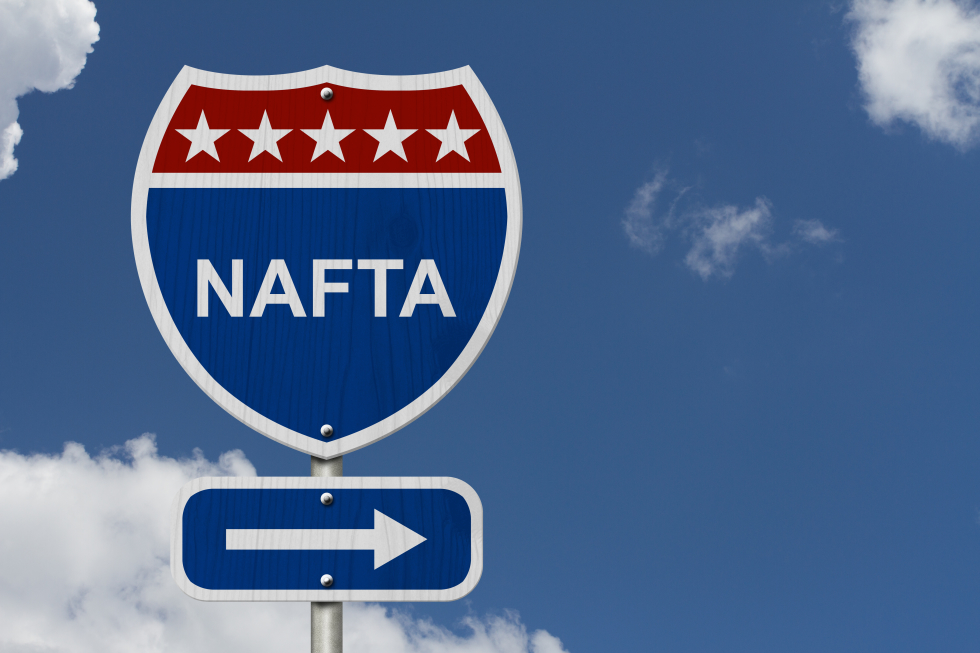Decoding NAFTA: North American Free Trade Agreement Insights
Navigate the impact, benefits, and evolution of the North American Free Trade Agreement (NAFTA) for a comprehensive understanding of cross-border commerce.

In the realm of international trade, the North American Free Trade Agreement (NAFTA), established in 1994, stands as a pivotal agreement shaping the trade dynamics between the United States, Canada, and Mexico. This transformative pact sought to break down trade barriers, spur economic growth, and create a seamless free trade zone across North America.
Explaining NAFTA Origin
NAFTA, or the North American Free Trade Agreement, was a comprehensive trade agreement between the United States, Canada, and Mexico. Created to promote economic cooperation and eliminate trade barriers among the three North American nations, NAFTA went into effect on January 1, 1994.
History of NAFTA
The roots of NAFTA can be traced back to President George H. W. Bush's "Enterprise for the Americas" initiative. The agreement itself originated during his presidency and built on the 1989 U.S.-Canada Free Trade Agreement. In 1992, negotiations expanded to include Mexico, resulting in the creation of NAFTA.
After signing NAFTA in 1993, the Clinton administration sought to stimulate economic growth and job creation through increased trade. NAFTA was a landmark agreement designed to reduce tariffs, eliminate trade barriers, and promote cooperation in various sectors, including agriculture, manufacturing, and services. Over the years, NAFTA has been both celebrated for boosting cross-border trade and criticized for its impact on employment and specific industries.
The agreement marked a significant chapter in North American trade history, setting the stage for closer economic ties and shaping the landscape of international trade in the region.
NAFTA Trade Overview
NAFTA ushered in an era of reduced trade barriers, setting the stage for a significant surge in cross-border commerce. The agreement, effective from January 1, 1994, established a free trade zone, eliminating or minimizing tariffs on various goods and services among its member nations. This move aimed to enhance economic activity, particularly in key sectors such as agriculture, automotive, and textiles.
At its core, NAFTA dismantled tariffs and trade barriers, fostering a seamless flow of goods and services across North America. The agreement targeted the reduction of impediments to trade, including high import tariffs and non-tariff barriers. Intellectual property protections were strengthened, creating a conducive environment for cross-border investments.
The Benefits of NAFTA
The impact of NAFTA has been profound, unleashing a wave of cross-border trade and investment. With trilateral trade exceeding $1 trillion between 1993 and 2015, industries such as agriculture and textiles experienced newfound opportunities, demonstrating the agreement's positive impact on competitiveness and economic expansion.
Navigating Complexity
To address concerns about potential job losses and immigration, NAFTA included side agreements that addressed labor and environmental protections. While certain industries faced challenges, the overall impact of NAFTA on economic growth and global competitiveness was undeniable.
NAFTA's Impact on the North American Trade Landscape
As NAFTA reshaped the North American trade landscape, its impact went far beyond the elimination of tariffs and trade barriers. The agreement fostered a dynamic environment that spurred innovation, collaboration, and economic development. Cross-border investment surged, creating an interconnected business ecosystem that propelled the three nations toward shared prosperity.
Pros of NAFTA
- Surge in cross-border trade and investment: NAFTA facilitated a significant increase in trade and investments among member nations, fostering economic interdependence and shared growth.
- Increased competitiveness of U.S. industries: Industries, especially in agriculture and manufacturing, became more competitive on a global scale, positioning North America as a powerhouse in various sectors.
- Opportunities for small businesses: Reduced trade barriers allowed small businesses to thrive in the expanded market, encouraging entrepreneurship and diversity in the business landscape.
- Establishment of universal, higher standards: NAFTA aimed to set higher standards in health, safety, and environmental practices, creating a framework for sustainable and responsible business practices.
Cons of NAFTA
- Loss of manufacturing jobs: Certain industries experienced job losses due to increased competition, necessitating a shift in workforce dynamics and skill sets.
- Increased inflation in the U.S.: Some critics pointed to inflationary pressures associated with the agreement, highlighting the complexities of balancing economic growth and stability.
- Growing U.S. trade deficits: Concerns arose as trade deficits, especially with Mexico, increased, prompting a reevaluation of the nuances of trade dynamics.
- Possible contribution to Mexican immigration: Wage differentials led to increased attractiveness of the U.S. job market, influencing patterns of immigration from Mexico.
While NAFTA navigated the complexities of North American trade, it left an indelible mark on the economic landscape, triggering debates and discussions that shaped its legacy.

Comparing NAFTA and USMCA
As the pages of trade history turned, the year 2020 ushered in a new era, bidding farewell to NAFTA and welcoming the United States-Mexico-Canada Agreement (USMCA). This modernized trade framework is built upon the foundation laid by its predecessor, incorporating updates to address contemporary challenges.
Comparing NAFTA and USMCA:
- Autos: USMCA raised the North American origin requirement for vehicle components from 62.5% to 75%.
- Pharmaceuticals: Protections for certain drug classes from cheaper alternatives were eliminated, fostering competition and potentially reducing healthcare costs.
- Dairy: USMCA allows U.S. farmers access to up to 3.6% of the Canadian market and vice versa, promoting agricultural trade and collaboration.
- Investor-state dispute settlement mechanism: The USMCA eliminated this mechanism for certain Mexican industries, aiming for fair and equitable dispute resolution.
- Intellectual-property protections: USMCA extended the protection period for intellectual property to 70 years, fostering innovation and safeguarding creative assets.
- Treaty sunset provision: Unlike NAFTA, USMCA introduced a provision for treaty review after 6 years, expiring after 16 years unless extended, ensuring adaptability to evolving global dynamics.
Navigating Trade Frontiers with Confidence
In the ever-evolving landscape of international trade, the journey from NAFTA to the United States-Mexico-Canada Agreement (USMCA) symbolizes a commitment to progress, collaboration, and shared economic growth. As businesses, entrepreneurs, and trade enthusiasts explore the Export Portal, a gateway to global opportunities, we extend an invitation to embark on a journey that transcends borders.
Join us on the Export Portal, where trade meets innovation, and opportunities unfold. Navigate the intricacies of international commerce with confidence, leveraging the rich legacy of North American Free Trade Agreement (NAFTA) and embracing the modernized frontier of USMCA. Your path to global success begins here – seize it with Export Portal.






Comments 0